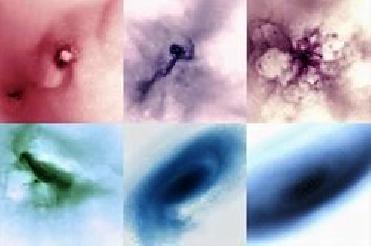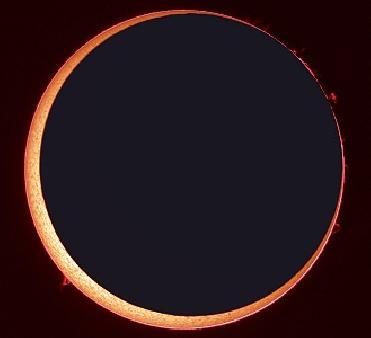
The images depict various stages of galaxy formation as per the cold dark matter theory using new computer simulations that account for the effects of supernova explosions. University of Washington Photo
WASHINGTON (BNS): A long-drawn puzzle of why small galaxies bear less stars and dark matter inside their wombs, contradicting the �cold dark matter� theory, appears to have been solved by a team of international astronomers.
The �cold dark matter� theory states that small structures in our Universe form first and then merge with each other to form more massive halos which in turn give birth to galaxies.
As per this theory, small or dwarf galaxies ought to have been containing more dark matter and stars inside them.
However, each such galaxy contains less than one percent of the stars found in larger galaxies such as the Milky Way.
The researchers, led by a University of Washington astronomer, now claim to have found an answer to the anomaly.
�Most previous work included only a simple description of how and where stars formed within galaxies, or neglected star formation altogether,� said Fabio Governato, a University of Washington research associate professor of astronomy and lead author of the paper published in the journal Nature.
�Instead we performed new computer simulations, run over several national supercomputing facilities, and included a better description of where and how star formation happens in galaxies,� he said.
The process showed that as most massive new stars exploded as supernovas, the blasts generated enormous winds that swept huge amounts of gas away from the centre of what would become dwarf galaxies, thereby preventing the birth of millions of new stars inside them.
With so much mass suddenly removed from the galaxy�s centre, the pull of gravity on the dark matter there is diminished and the dark matter drifts away, Governato explained.
�It is similar to what would happen if our Sun suddenly disappeared and the loss of its gravitational pull allowed the Earth to drift off into space,� the researcher said.
These cosmic explosions were indeed the missing link the �cold dark matter� puzzle, the researchers said.
 Previous Article
Previous Article Next Article
Next Article












The Indian Air Force, in its flight trials evaluation report submitted before the Defence Ministry l..
view articleAn insight into the Medium Multi-Role Combat Aircraft competition...
view articleSky enthusiasts can now spot the International Space Station (ISS) commanded by Indian-American astr..
view article